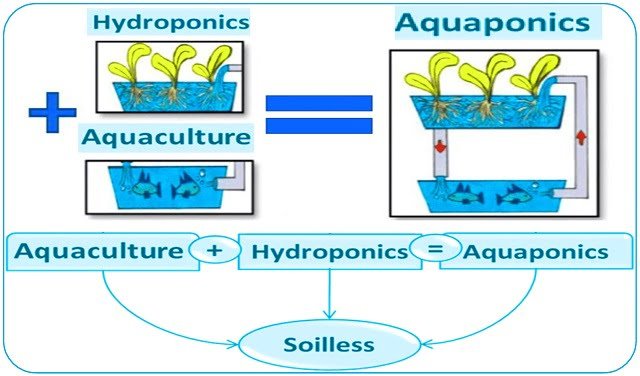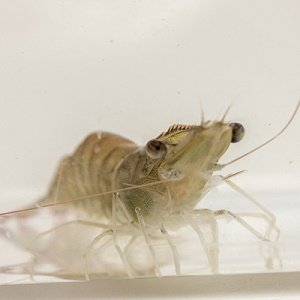
Among the innovative practices revolutionizing aquaculture is Biofloc Technology (BFT), a sustainable system that relies on microbial communities to maintain water quality and enhance shrimp growth.
Researchers from Qatar University and Universiti Malaysia Terengganu have explored how varying salinity levels influence the maturation of BFT systems in the Pacific white shrimp Penaeus vannamei culture, providing valuable insights to optimize aquaculture practices.
The role of salinity in biofloc maturation
Salinity is a critical factor in aquaculture, affecting both shrimp physiology and microbial dynamics. The study investigated the impact of four salinity levels on BFT maturation:
- M44: Persian Gulf seawater with 44 ppt salinity.
- M22: Diluted seawater at 22 ppt.
- W22: Well water with 22 ppt salinity.
- M11: Diluted seawater at 11 ppt.
Study findings
Salinity influences biofloc maturation
The study highlights the importance of salinity in shaping microbial communities and their metabolic functions within BFT systems:
- Low salinity (11 ppt): Accelerated the maturation of ammonia-oxidizing bacteria, which convert toxic ammonia into nitrite.
- High salinity (44 ppt): Promoted the growth of nitrite-oxidizing bacteria, which convert nitrite into less harmful nitrate.
Impact on shrimp growth and survival
Biofloc systems can provide efficient nitrification and maintain water quality, but microbial community maturation time is crucial, as it can affect shrimp growth and survival, especially in low-salinity cultures.
Prolonged exposure to high nitrite levels negatively impacted shrimp survival and productivity in the M11 (11 ppt) treatment.
Specific bacterial communities
Researchers identified several bacterial strains in different salinity treatments. Calidifontibacillus erzurumensis and Bacillus velezensis were the most dominant and adaptable to varying salinity levels. Some bacteria, such as Streptococcus thermophilus, Bacillus siamensis, Shewanella algae, Rheinheimera pleomorphica, and Pseudomonas alcaligenes, were exclusively found in the freshwater treatment (M11), suggesting lower salinity tolerance.
Biofloc composition
The proximate composition of biofloc varied significantly among treatments. The M11 (low salinity) treatment showed the highest crude protein content, while lipid (ether extract) and ash content increased with salinity.
Stay Always Informed
Join our communities to instantly receive the most important news, reports, and analysis from the aquaculture industry.
Water quality
Total suspended solids (TSS) values ranged from 325 to 625 mg/L. M11 treatments showed lower alkalinity values, which may have delayed biofloc maturation. TAN (total ammonia nitrogen) and NO2-N (nitrite) parameters showed significant differences among experimental treatments.
Temporal dynamics of water quality parameters
Researchers observed a notable increase in TAN concentrations from the first week, peaking on day 10 across all treatments. The M11 treatment reached the lowest ammonia value on day 18, indicating a mature state for this nitrogenous metabolite.
Implications for shrimp aquaculture
This study has several important implications for the shrimp industry, particularly regarding salinity management in biofloc technology (BFT) systems:
- Optimizing Salinity for Biofloc Maturation: The shrimp industry can adjust salinity levels to optimize biofloc maturation and improve water quality.
- Risk Management in Low-Salinity Cultures: Low-salinity shrimp farming presents risks associated with nitrogenous byproduct toxicity. The industry should implement strategies to mitigate these risks, such as inoculating mature biofloc to minimize nitrogenous byproducts.
- Importance of Microbial Composition: The study highlights the need to maintain a diverse and balanced bacterial community to optimize nitrification and water quality control. The industry can focus on fostering the growth of beneficial bacteria to enhance biofloc system efficiency.
- Nutritional Considerations: Biofloc’s proximate composition varies with salinity. Low-salinity treatments showed higher crude protein content, which is advantageous for shrimp growth.
- Managing Maturation Time: Biofloc maturation time is a decisive factor in production management. The industry should monitor and manage microbial community maturation time, as it affects shrimp growth and survival, particularly in low-salinity cultures. Accelerating maturation time can be crucial for improving efficiency and profitability.
- Adaptation to Different Conditions: The shrimp industry is increasingly exploring low-salinity farming due to inland production expansion. This study provides valuable insights into how to adapt and optimize biofloc systems for these conditions, maximizing performance and minimizing risks.
Conclusion
The study provides a comprehensive understanding of how salinity influences BFT system maturation in Penaeus vannamei farming. By identifying optimal salinity levels for different bacterial groups, the research offers practical guidance for aquaculturists to optimize their systems for water quality and shrimp growth.
As the aquaculture industry continues to expand, innovative technologies like BFT will play a crucial role in sustainably meeting the global demand for seafood. This study not only enhances our understanding of microbial dynamics in biofloc systems but also highlights the importance of salinity management for achieving efficient and eco-friendly shrimp production. By leveraging these insights, the aquaculture industry can move toward a more sustainable and resilient seafood production future.
The study was funded by the Qatar National Research Fund, Qatar, and the Ministry of Municipality, Qatar.
Contact
Victor Torres Rosas
Qatar University, Environmental Science Center
P.O. Box: 2713, Doha, Qatar
Email: victor.torres@qu.edu.qa
Reference (open access)
Al-Sayegh, S. Y., Rosas, V. T., Vethamony, P., Kasan, N. A., Liew, H. J., Ikhwanuddin, M., Disi, Z. A. A., Elsayed, H., & Al-Khayat, J. A. (2025). Maturation of the biofloc system in Penaeus vannamei culture under different salinities and its effects on the microbial communities. Aquaculture Reports, 40, 102568. https://doi.org/10.1016/j.aqrep.2024.102568
Editor at the digital magazine AquaHoy. He holds a degree in Aquaculture Biology from the National University of Santa (UNS) and a Master’s degree in Science and Innovation Management from the Polytechnic University of Valencia, with postgraduate diplomas in Business Innovation and Innovation Management. He possesses extensive experience in the aquaculture and fisheries sector, having led the Fisheries Innovation Unit of the National Program for Innovation in Fisheries and Aquaculture (PNIPA). He has served as a senior consultant in technology watch, an innovation project formulator and advisor, and a lecturer at UNS. He is a member of the Peruvian College of Biologists and was recognized by the World Aquaculture Society (WAS) in 2016 for his contribution to aquaculture.




